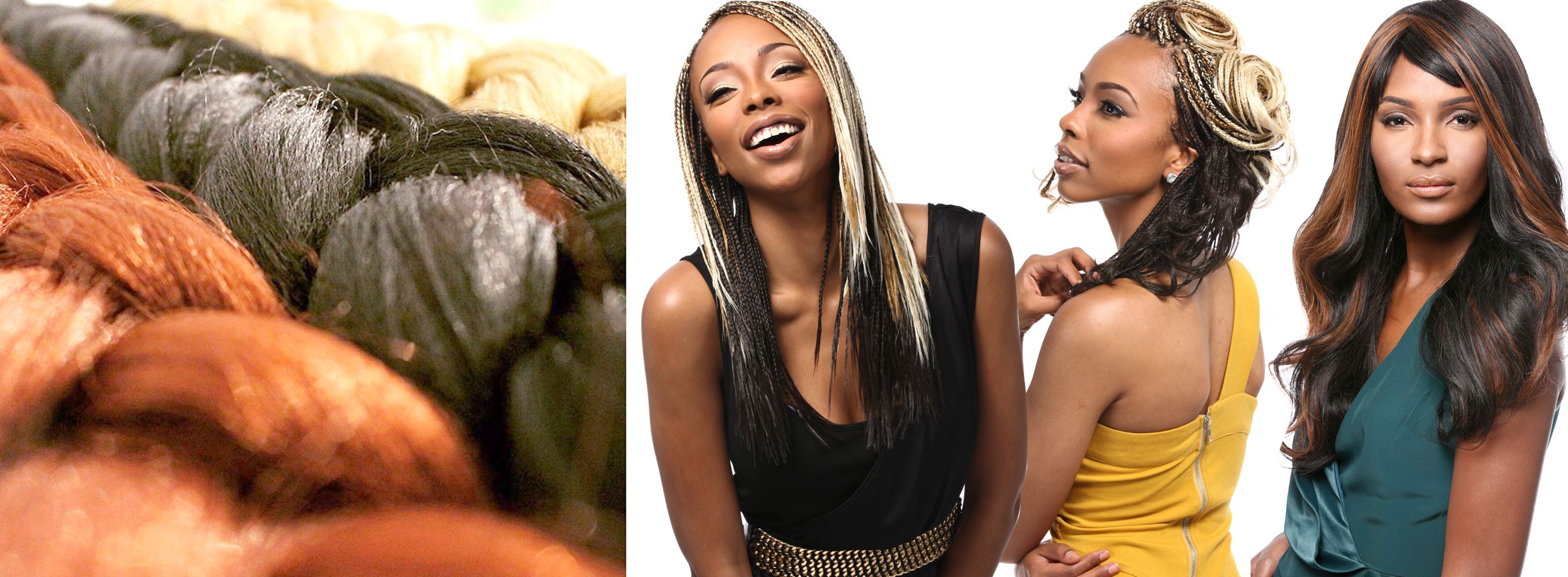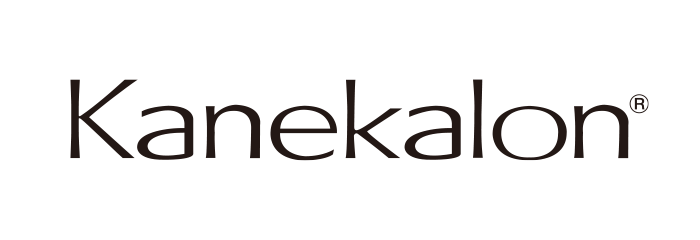
Product Lineup
- Hair Products
- Product Lineup
Product Lineup
Kaneka's fibers for hair attachments have been tested by third-party inspection agencies to ensue their safety.
* The below synthetic fibers are all created as hair ornamentation materials. Please do not use them for hair transplants into human skin.
Kanekalon®, Modacrylic Fiber
 A synthetic fiber with a copolymer of modacrylic and vinyl chloride.
A synthetic fiber with a copolymer of modacrylic and vinyl chloride.
Kanekalon® is lightweight, soft, and gentle on skin and finger tips. It braids well and its natural appearance like that of human hair. With Hot Water Set technology, a variety of hair styles can be created by using hot water. We provide a variety of fiber types with different textures, volume, shine, function such as quick-drying to meet one’s tastes. It is wonderful for hair extensions such as braids and other bulk styles.
The above synthetic fibers are all created as hair ornamentation materials. Please do not use them for hair transplants into human skin.

Advantage™, Polyvinyl Chloride Fiber
 A synthetic fiber which uses polyvinyl chloride.
A synthetic fiber which uses polyvinyl chloride.
Advantage has a neat and beautiful appearance with a soft texture that is damage-resistance (less likely to cause pilling). We offer a variety of fiber types to achieve intended styles, with different shine, curl shapes, and combability. It is recommended for hair products such as weaving, wigs, and bulk styles.

Futura™, Flame-Retardant Polyester Fiber
 A synthetic fiber with polyethylene terephthalate.
A synthetic fiber with polyethylene terephthalate.
Futura excels in its human-hair like texture that allows for smooth combing, as well as its good curl holding. It is a high-heat fiber, so electric hair irons can be used to arrange hairstyles. The recommended temperature is 180℃ or less (not a guaranteed value). Futura comes in multiple types, and by mixing them, even a more natural look and feel can be achieved. It is suitable for hair attachments such as wigs, and weaving styles.

Ultima™, Collagen Fiber
 A regenerated fiber with collagen.
A regenerated fiber with collagen.
This is the first man-made hair in the world to succeed in industrial production using natural collagen. Ultima features a pleasantly cool texture and appearance similar to human hair. It can be even reset using water. Electric hair irons can be used as well.

The flame-retardance of Kaneka's hair ornamentation fibers
Kaneka's hair ornamentation fibers are self-extinguishing (*1). The flame-retardance does not decrease through shampooing.
The flame-retardance of various materials (*2)
| Type of fiber | Fiber | LOI value (*3) | Feature | ||
|---|---|---|---|---|---|
| Our product | Kanekalon® | Modacrylic fiber | AFRELLE | 28 | Self-extinguishing, melt/drip resistant (*1) |
| Advantage™ | Polyvinyl chloride fiber | ADM | 36 | Self-extinguishing, melt/drip resistant | |
| Futura™ | Flame-retardant polyester fiber | FUTURA | 28 | Self-extinguishing, melt/drip resistant | |
| Ultima™ | Collagen fiber | ULTIMA | 40 | Self-extinguishing, melt/drip resistant | |
| Human hair | Product A from other company |
27 | Self-extinguishing, melt/drip resistant | ||
| Non-flame-retardant polyester fiber | Product B from other company |
20 | Burns easily, melts/drips easily | ||
| Nylon fiber | Product C from other company |
20 | Burns easily, melts/drips easily | ||
| Polypropylene fiber | Product D from other company |
19 | Burns easily, melts/drips easily | ||
- (*1)Self-extinguishing: If non- flame-retardant synthetic fibers catch fire, it can quickly spread. However, Kaneka's hair ornamentation fibers will self-extinguish once they are removed from the source of fire.
Melt/drip: A phenomenon where, if some non-flame-retardant synthetic fibers catch fire, the resin can melt and drip in a liquid form. If high-temperature melted substances touch the skin they can cause burns making them seriously dangerous. All of Kaneka's hair ornamentation fibers feature drip/melt resistance. - (*2)The above values are for typical fibers of each brand. They are test values and are not guaranteed.
- (*3)LOI (Limiting Oxygen Index): A value used to indicate flame-retardance, higher LOI values indicate higher resistance to burning. LOI values are indicated by the volume percent of the minimum amount of oxygen required for the substance to continue burning in a mixed gas of nitrogen and oxygen (LOI=O2/(O2+N2)×100[%]). The above values were measured by Kaneka based on the JIS L 1091 method. For test samples, fibers sized 160 mm and 0.25 g were twisted into the length of 50 mm.
